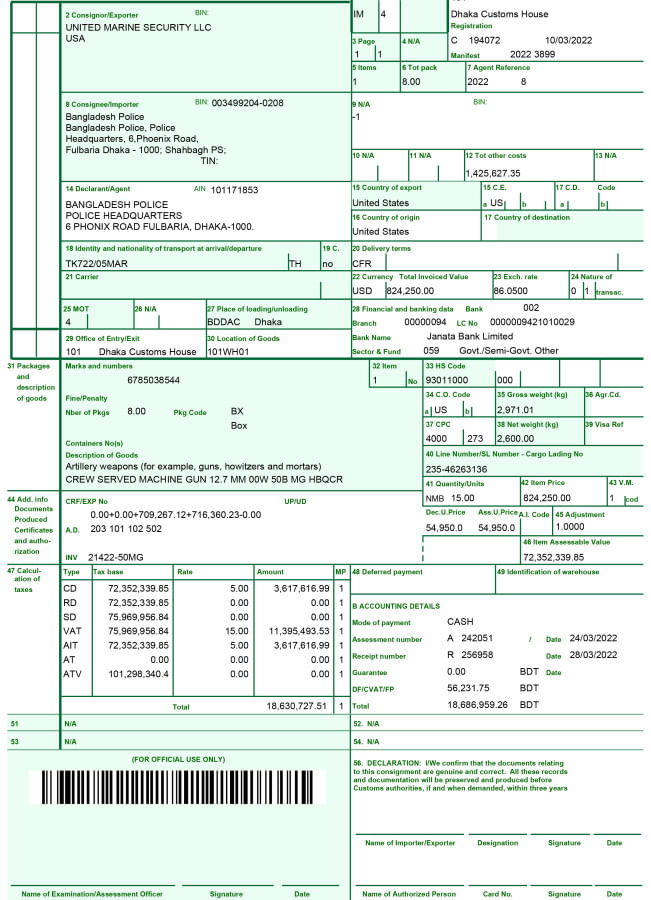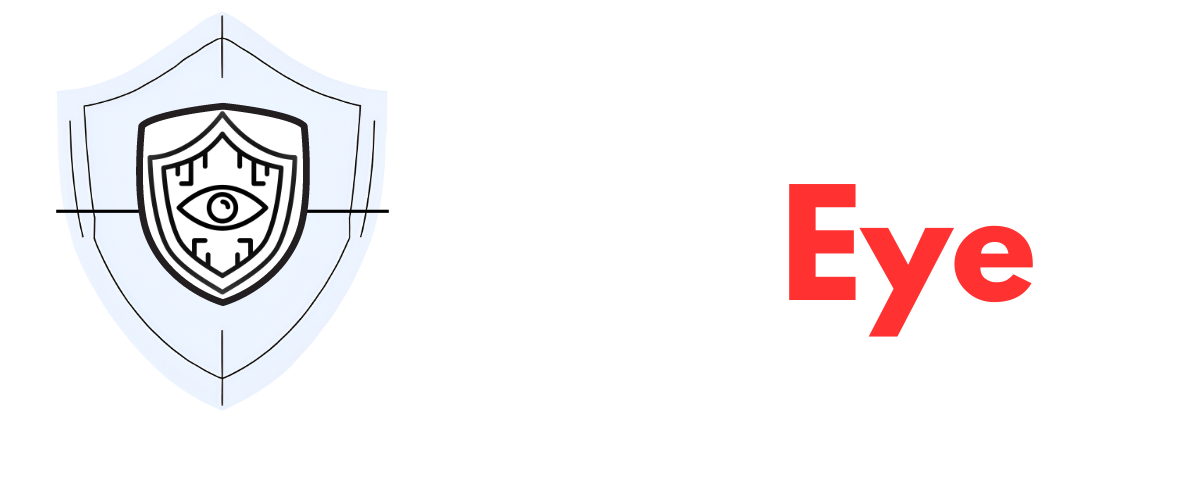Google Alert – Bangladesh Army
A closer look at police’s arms procurement records reveals the brutal truth behind the July killings; the force bought 7 times more lethal weapons than non-lethal ones in 2021-23
Long before bullets ripped through crowds during the July uprising, the Bangladesh Police had already been configured not as a force to keep peace, but a heavily-armed institution with deadly intent.
Beyond Sheikh Hasina’s now-infamous phone call on July 18, 2024, where she admitted ordering the use of lethal weapons against protesters, a closer look at the police’s armoury explains the high death toll during the movement that eventually toppled the Awami League government.
Based on official data, The Daily Star has now uncovered that, in the years leading up to the uprising, the Bangladesh Police stocked nearly three times as many lethal weapons as non-lethal ones.
When protests intensified, the police responded with what they had, and what they had were weapons designed to kill.
A BUDGET FOR BLOODSHED
Between 2021 and 2023, Bangladesh Police bought 2.49 crore pieces of lethal ammunition, more than seven times the 30 lakh units of non-lethal rounds it purchased, including tear gas and rubber bullets.
Import documents, including customs records, show that Tk 240 crore was spent on lethal weaponry in those three years, roughly 1.5 times more than the Tk 191 crore spent on non-lethal arms.
This investment in lethality proved devastating during the July-August uprising. The scale and sophistication of arms used, some meant for the battlefield, have raised alarming questions about the militarisation of a civilian force.
COMBAT RIFLES FOR CROWD CONTROL
In 2022, just two years before the uprising, the police imported 18,000 pieces of 7.62mm semi-automatic rifles.
The arms would later be seen in chilling photos and videos of police firing on protesters, as was found by previous investigations by The Daily Star, as well as the United Nations Fact-Finding report, published in February 2025. These rifles were backed by a stockpile of 10 lakh live rounds.

“This is a type of ammunition designed for use in combat situations against persons wearing body armour and not for law enforcement applications. It would normally be available only to the Army or paramilitary forces such as the BGB and RAB. This ammunition is not available for civilian purchase in Bangladesh,” said the UN report.
In July 2024, as The Daily Star analysed ballistics being used in the protest sites, Brig Gen (retd) M Sakhawat Hussain, now labour and shipping adviser, had told this newspaper, “The 7.62mm rifles used by police have two modes — single firing and rapid firing. In the videos we have seen, they have mostly used the rapid-fire mode or automatic mode, which are mostly used in wars.” He had called them the “best Chinese killing machines”.
In January this year, the Police Headquarters’ Arms and Ammunition Entitlement Committee itself recommended replacing the 7.62mm rifles with pistols to “reduce casualties”.
The police headquarters did not respond to our emails and text messages about the justification of procurement of such lethal weapons, and what they plan to do with those weapons in the future.
AN UNEXPLAINED ARSENAL
The police’s weaponry extended well beyond 7.62 Type 56 rifles. In 2022, they acquired two categories of machine guns.
One was the 9mm MSG-9P submachine gun (SMG) from Turkey. Just one shipment of these guns weighed 7.52 tonnes, and was procured at a cost of Tk 51.4 crore.
Although its exact firing range, muzzle velocity and rate of fire (rounds per minute) is not clear, other similar models can shoot several hundred rounds per minute. With twin 30-round magazines and rapid-fire capacity, the manufacturer’s website boasts its “superior firepower in close-quarters combat”.
The other was a more ominous acquisition: 15 units of the crew-served 12.7×99 mm NATO machine gun, also called Browning Machine Gun. This specific type of long-range weapon has to be mounted on a tripod and is used for shooting distant targets.
The Daily Star has found no evidence that the Browning Machine Gun was deployed during the uprising.

A former senior official of the military’s ordnance directorate, speaking on condition of anonymity, said that this weapon is meant for shooting down aerial targets like helicopters or planes, not civilians.
“This weapon is about five feet long. Its bullets are six inches long each. It requires two people to operate because it is so large. One shoots, while the other feeds the magazine. It can shoot several hundred rounds per minute,” said the official. “There is only one place in the country which has the depth of field needed for shooting training of this weapon, and that is in Chattogram’s Bhatiari.
“It is unthinkable that the police would need this,” he added.
A LEGACY OF MILITARISATION
The Daily Star had previously reported that the police began militarising itself following a meeting in October 2014 held by the home ministry.
A retired additional inspector general of police who attended the meeting had told this newspaper that the rationale presented for the decision was that the demonstrations by Hefajat-e-Islam at Shapla Chattar on May 5, 2013, were “difficult to control”.
The push for greater firepower escalated over the decade.
Between 2021 and 2022, police procured 14,600 Glocks (handheld pistols) and 8,000 other 9mm pistols, backed by 15 lakh rounds of ammunition.
The UN Fact-finding mission received a report from the police during its investigation, where the police divulged that the 7.62mm rifles, the SMGs and the Glocks were deployed to quell protests in Dhaka, Chattogram, Sylhet, Gazipur, Narayanganj, Narsingdi, Kishoreganj, Cox’s Bazar, Cumilla, Chandpur, Rajshahi, Chapainawabganj, Bogura, Magura, Bhola, Mymensingh, and Manikganj.
COUNTING BULLETS, AND THE DEAD
Dr Qazi Zahed Iqbal, a Supreme Court lawyer and researcher at Lawyers for Energy, Environment and Development, said his team recorded at least 4,634 instances of live bullet use by analysing 100 cases filed by the police during the uprising.
“We observed from the police’s own declarations that they had used lethal weapons more than non-lethal weapons. The usage suggests that they had a massive amount of lethal weapons,” said Dr Iqbal.
His team documented the use of 7.62mm semiautomatic rifles, submachine guns, BD08 assault rifles, Taurus 9mm revolvers and Type 54 pistols.
Lead pellets have been proven to be deadly in the field, leading to the deaths of many protesters, including Farhaan Faiyaz, a Class XI student at Dhaka Residential Model College. He was killed on July 18, 2024, during the quota reform protests in Dhanmondi and his body was peppered with shotgun pellets.
Between 2021 and 2023, the police purchased 18,000 pieces of 12-bore shotguns and spent Tk 16.5 crores on purchasing lead pellets.
The UN report confirmed their use in “numerous locations.”
QUESTIONS OF LEGALITY
Major Gen (retd) ANM Muniruzzaman, president of Bangladesh Institute of Peace and Security Studies, said police are legally barred from importing “prohibited bore” weapons without a clearance from the Bangladesh Army’s Directorate of Weapon, Equipment & Statistics.
Bangladeshi law categorises firearms as “prohibited bore” and “non-prohibited bore”, with the latter being smaller calibre handguns. All the lethal firearms mentioned above are “prohibited bore” according to Muniruzzaman.
Multiple sources from the customs department said that the shipments of the SMGs and machine guns were cleared by the home ministry.
Meanwhile, the clearance papers of the 18,000 pieces of 7.62mm semi-automatics show that the firearms were cleared by the inspector general of police from Police Headquarters, while the Chattogram Metropolitan Police signed to release the shipment from Chattogram Customs.
The documents obtained do not mention whether permission was sought from the army’s weapons directorate.
FROM ACROSS THE GLOBE
Turkey was a top supplier of weapons to Bangladesh Police, with eight companies providing Tk 134 crore worth of ammunition.
Purchases included submachine guns, pistols, 12-bore shotguns, lead pellets, and corner shotguns.
The United States was another top source, with six suppliers delivering Tk 56 crore worth of weapons, including crew-served machine guns and Glock pistols.
China followed, selling Tk 44 crore in arms through six suppliers. China provided 18,000 semi-automatic rifles for Tk 30 crore and also supplied ammunition over multiple years.
The police also imported lead pellets worth Tk 8.5 crore from Spain and Cyprus.
Methodology: The Daily Star entirely relied on shipment and import records. In the case of certain shipments for lead bullets and rubber bullets, the quantity imported was not mentioned, but the net weight of the consignment was mentioned. In those cases, we obtained the individual weights of each of the bullets from supplier websites and arrived at estimates for the quantity.

